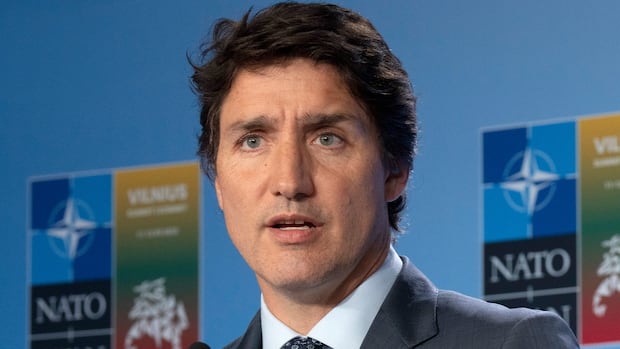The cabinet minister in charge of the federal treasury says it doesn’t make sense to pour vast amounts of money into the Department of National Defence until it has the capacity to spend what it’s being given.
Federal Treasury Board President Anita Anand, a former defence minister, waded into the debate over Canada’s apparent inability to meet the NATO benchmark of spending two per cent of the country’s gross domestic product on the military.
Her remarks came Tuesday, a day ahead of NATO Secretary General Jens Stoltenberg’s visit to Ottawa, where he is expected to meet privately with Prime Minister Justin Trudeau.
Canada has been under increasing pressure from allies — and from critics at home — to publicly chart a path toward meeting the western military alliance’s spending goal for member states.
The Department of National Defence (DND) has for years been unable to spend its entire annual appropriation from the federal treasury — a fact Anand underlined as she defended the government’s reluctance to come up with a plan to hit two per cent.
“I would like to stress to the media that it is fairly superficial to only speak about two per cent without examining how the funding is going to be spent in the short and the long term,” Anand told reporters before cabinet on Tuesday.
“If you can understand that procurements take time and they require expertise, then you would see the need to have more public servants who are able to work on those procurements, and multiple procurements at the same time, to get them out the door, to spend that money.
“And why would we continue to fill the — fill those — the books with additional money, if that money can’t get out the door?”
Staffing shortage contributes to costs, report warns
The recent update to the defence policy promises to hire more civilian staff at DND to help shepherd major procurement projects through the system.
While the latest federal budget sets aside $149 million over four years for that effort, the funding does not kick in until next year.
The dilemma Anand spoke about is well known around Ottawa. The shortage of qualified procurement staff needed to navigate federal regulations and military requirements has been the subject of at least two major independent studies over the last decade.
In 2016, the Liberal government was presented with a research report by PricewaterhouseCoopers, a copy of which was leaked at the time to the Canadian Press. It said that both Public Services and Procurement and DND lack the in-house staff and expertise they need to understand technical matters, and that their absence contributes to higher project costs.
A year before that, a major study by the Conference of Defence Associations Institute and the Macdonald-Laurier Institute explained how the Liberal government in the 1990s cut the number of defence procurement staff and those cuts were never reversed by the Conservative government that followed.
In the early 1990s, the federal government employed 9,000 staff members tasked with buying military equipment. There were just over 4,300 by 2009, and those people were responsible for pushing through double the number of projects.
“Set against this significantly increased workload, there is simply not enough capacity in the acquisition workforce to manage it,” said the 2015 assessment by Dave Perry (now of the Canadian Global Affairs Institute) and retired colonel George Petrolekas.
Since their return to power in 2015, the Liberals have not rebuilt DND’s purchasing section.
While Anand was defence minister, a 2023 internal report noted there were only 4,200 positions in the department’s material branch and 30 per cent of them were vacant. The report, posted online, warned that a “lack of trained resources puts the department at risk of failing to meet defence policy obligations.”
Stoltenberg’s visit comes in the same week that NATO released new figures that show Canada is now among a handful of member countries that don’t meet the two per cent benchmark.
A bipartisan group of U.S. senators wrote a letter calling out Prime Minister Justin Trudeau over Canada’s failure to meet its NATO defence spending target.
The data, released Monday ahead of Stoltenberg’s visit to Washington, shows Canada is expected to spend 1.37 per cent of its GDP on defence this year.
Ahead of the secretary general’s visit, Defence Minister Bill Blair acknowledged the subject of defence spending likely would be raised when Stoltenberg has dinner with the prime minister.
“I think inevitably we will go to two per cent,” Blair told CBC News on Tuesday. “The prime minister will have that conversation with the secretary. I’ve had that conversation with NATO officials. Canada makes a very significant, important contribution. We’re going to do what is required.”




